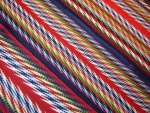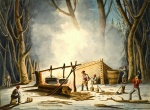Recent Articles
The Point: a Franco-American Heritage Site in Salem, Massachusetts
Traditional French Songs in Ontario
Fort William, Crossroad of a Fur Trading Empire
The Guigues Elementary School in Ottawa
Centre franco-ontarien de folklore (CFOF)
Centre de recherche en civilisation canadienne-française (CRCCF)
Articles
-

Alexis de Tocqueville in Louisiana in 1832
Alexis de Tocqueville (1805-1859) journeyed to the United States in 1831 and 1832 accompanied by his colleague, French Magistrate Judge Gustave de Beaumont. His official purpose was to study the penal system in place there. Despite his official purpose, his travels enabled him to better understand the phenomenon of democracy in America and its inevitable development. This journey also permitted the two men to establish first hand contact with the aftermath of French colonization in North America for the first time. They came into contact with survivors from the final years of French military and political presence on the continent. Tocqueville and Beaumont had previously spent time in Lower Canada at the end of summer in 1831. Then, from the 1st to the 3rd of January, 1832, they went to New Orleans, Louisiana. The observations made during this last visit stood out in contrast to what they had seen in Lower Canada.
-

Alexis de Tocqueville’s visit to Lower Canada in 1831
In Alexis de Tocqueville's works, many pages are dedicated to the inhabitants, their historic destiny, as well as to the cultural and political situation of Lower Canada within the British Empire. His writings offer acute observations and penetrating analyses on the topics listed above. Alexis de Tocqueville (1805-1859) is notably famous for his masterpiece Democracy in America (1835), which offers a brilliant analysis of the inevitable advent of the young United States of America's democratic society. In this work, Tocqueville examines with care, a civilisation characterised by a desire for equality, a sometimes fanatical individualism and the ever looming tyranny of the majority. The work is based on meticulous observations, accumulated during a nine-month journey across the country (from May 9th, 1831 to February 20th, 1832) with a colleague, the magistrate, Gustave de Beaumont. It is less widely known that the two travellers also visited Lower Canada from August 23th to September 2nd, 1831, as Tocqueville did not write any specific works as a result of that particular voyage.
-
Assomption Sash
The Assomption (or arrow) sash is a symbolic piece of clothing central to the culture of the French-speaking population of North America. The item was widely worn for almost a century, from the end of the 18th to the end of the 19th century, before it fell into disuse, a result of the decline of the fur trade industry. Subsequently, this "masterpiece of Canadian domestic textile industry", as E.-Z. Massicotte once put it, came to be associated with the traditional cultures of the French-Canadian and the Métis. Today, enthusiasts have committed themselves to safeguarding of this cultural custom. Thanks to artisans who continue to weave sashes according to traditional methods, this unique technique has been kept alive.
-
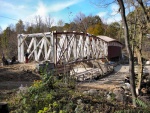
Covered Bridges of Quebec
From the early 18th and up to the middle of the 19th century, hundreds of wooden covered bridges were built in Quebec. These structures, which were a common sight in the country side over the last century, have been witness to much of the province's economic and political history. The systematic construction of these distinctly designed bridges is a phenomenon that is being studied more and more. Replaced in great numbers when the road network was improved in the 1950s and 1960s, less than a hundred of the structures now remain. Today they are an essential part of Quebec's architectural heritage.
Images
-
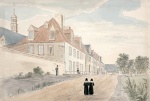
L'Hôpital général à Q
uébec, Bas-Cana...Article :
Catherine de Saint-Augustin, Remembered from Quebec to Normandy -
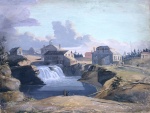
Vue du moulin et de l
a taverne de Ph...Article :
Chaudière Falls in the Outaouais Region -

Mausolée de Georges-É
lie Amyot au ci... -

L'Ange-Gardien et, su
r l'autre rive ...Article :
Coverdale Collection
-

Le cap Diamant à Québ
ec, Bas-Canada ...Article :
Coverdale Collection -

Wigwams à la pointe d
e Lévis, au Bas...Article :
Coverdale Collection -
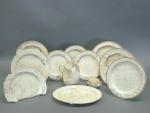
Ensemble de vaisselle
de table en cr...Article :
Saint Louis Forts and Châteaux National Historic Site (Quebec City) -

Auberge Pinard, Bas-C
anada, vers 186...Article :
The Chemin du Roy between Quebec City and Montreal
-
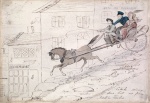
Calèche descendant un
e côte à Québec...Article :
The Chemin du Roy between Quebec City and Montreal -

Le débat sur les lang
ues: séance de ... -

Louis-Hippolyte Lafon
taine (1807-186... -
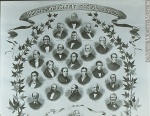
Souvenir du groupe de
s Patriotes de ...
-

Les Insurgés, à Beauh
arnois, Bas-Can... -
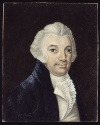
Gabriel Elzéar Tasche
reau, membre du... -

Habitants du Bas-Cana
da, 1837 -
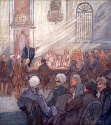
L'Assemblée législati
ve du Bas-Canad...
-
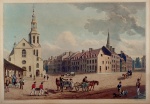
Québec, Bas-Canada.
Vue du marché ... -
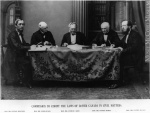
Commission ayant pour
mandat de codi... -
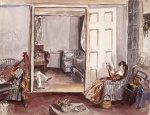
Le salon du manoir de
Beauharnois, B... -
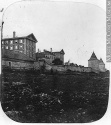
Les Sulpiciens ont pl
usieurs possess...Article :
Saint Sulpice Seminary, Montreal
Documents PDF
-
Extrait des écrits de Tocqueville (description du Bas-Canada)
Taille: 58 Kb
-
Extrait de la conversation de Tocqueville avec Mr. Neilson
Alexis de Tocqueville, Tocqueville au Bas-Canada. Écrits datant de 1831 à 1859. Datant de son voyage en Amérique et après son retour en Europe. Montréal, Les Éditions du Jour, 1973, 185 pages. Collection : “Bibliothèque québécoise ”. Présentation de Jacques Vallée. Taille: 58 Kb
Article :
Alexis de Tocqueville’s visit to Lower Canada in 1831 -
Extrait des écrits de Tocqueville où il décrit le Bas-Canada
Taille: 58 Kb
Article :
Alexis de Tocqueville’s visit to Lower Canada in 1831 -
Conseils sur la culture des gourganes: extrait du Traité d'agriculture pratique seconde partie, de la grande et moyenne culture, adaptée au climat du Bas-Canada, 1831 (PDF, 189 Ko)
Traité rédigé par Joseph-François Perrault (1753-1844). Les conseils relatifs à la culture de la gourgane se trouvent en pages 132-133. Domaine public. Ouvrage disponible en ligne sur www.canadiana.org.
Article :
The Cultural and Culinary Voyage of the “Gourgane”

